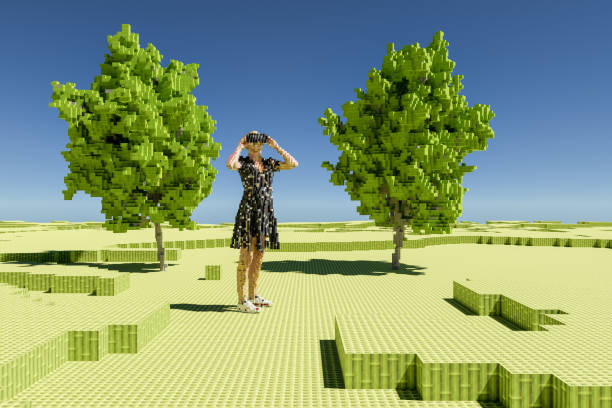Enthralling Journey of Digital Art: From Pixels to Masterpieces
Introduction: Dive into the captivating world of digital art, an innovative medium that's transforming the artistic landscape. Discover its history, current trends, and the profound impact it's having on the arts and entertainment industry. Born from the marriage of art and technology, digital art emerged in the late 20th century as artists began to experiment with digital tools. The genesis of this medium can be traced back to the 1960s, when artists like Michael Noll and Frieder Nake used computer algorithms to create visual compositions. The 1980s saw the advent of personal computers, equipping artists with more accessible tools to create digital art.

The Era of New-age Tools
With the advent of advanced software like Adobe Photoshop and Illustrator in the 90s, artists could now manipulate images and create digital paintings with ease. This era also saw the rise of 3D modeling and animation, opening a whole new dimension for artists to explore. The development of virtual reality and augmented reality technologies in recent years has further broadened the possibilities of digital art.
The Current Canvas: NFTs and Cryptocurrency
Digital art has recently made headlines with the advent of Non-Fungible Tokens (NFTs) and the cryptocurrency market. NFTs have revolutionized the way digital art is valued and sold, providing artists with a platform to monetize their work in unprecedented ways. The recent sale of digital artist Beeple’s NFT artwork for a staggering $69 million is a testament to this new phenomenon.
The Impact: Democratising Art
Digital art has significantly democratized the art world, breaking down traditional barriers and making art more accessible to the masses. Artists now have a global platform to showcase their work and interact with audiences. Moreover, digital art has blurred the lines between different art forms, facilitating interdisciplinary collaborations and enriching the overall artistic discourse.
The Future: The Metaverse and Beyond
The future of digital art is being shaped by breakthroughs in technology, particularly the metaverse—a collective virtual shared space, created by the convergence of physical and virtual reality. This promises an immersive, interactive experience that could redefine the way we perceive and engage with art.
As digital art continues to evolve, it relentlessly pushes the boundaries of creativity, transforming not just the arts and entertainment industry, but also our understanding of what art can be. Despite its relatively short history, the impact and significance of digital art cannot be understated. Its journey from pixels to masterpieces is a testament to the power of innovation and the unbounded potential of human creativity.




